“To infinity and beyond”, as a character from a famous animated film once said. And while this phrase is often repeated, sometimes out of place, I think that today, in this particular article, it feels more fitting than ever.
“To infinity and beyond” is not only a theme tied to space exploration, which INTERSTELLAR ARC, the new work by Felix & Paul Studios, explores. It also defines our imagination and its innate ability — that some people lose along the way — to picture what lies beyond our human limits and everyday experiences, taking us “where no man has gone before“.
With their creations and their presence in the field, Felix & Paul Studios have certainly transformed it. Yet what struck me most in my conversation with Félix Lajeunesse about the origins of INTERSTELLAR ARC was realizing how much this fictional vision is rooted in something profoundly human: the drive to explore, the urge to discover, and above all, the longing to experience emotions and wonder with the openness of a child.
It’s a concept very dear to me, and I cannot wait to see how it comes to life in this new project, when it will open its doors to the audience on October 15 at AREA15 in Las Vegas.
Passengers begin their journey in the 25th century, departing from HEXO Spaceport One, located in Zone 2: The Terminals at AREA15 in Las Vegas. After boarding the INTERSTELLAR ARC, voyagers enter cryogenic sleep and awaken 262 years later as they approach exoplanet Arcadia. Passengers get to explore the vast, gravity-defying spaces of the INTERSTELLAR ARC, preparing themselves for arrival on this new world. Their journey culminates at Cosmopolis — a sprawling space city orbiting Arcadia, where humanity’s next chapter begins.
Creating space for emotion and wonder in a collective setting
FÉLIX LAJEUNESSE – I have been now focusing on creating fully immersive experiences for more than a decade, since 2012, when Paul and I began to explore immersive storytelling from within and we created our studios.
The recurring idea I always return to is that, at its core, we are trying to recreate real life. We are attempting to design something that carries the same emotional spectrum as a real-life experiences.
That is a massive endeavor, because when you think about what makes up real life, you think about its strangeness and its endless possibilities, but you also think about subjectivity.
Reality is filtered through a person’s mind, feelings, and emotions. It is not the same for you, for me, for Paul, or for a stranger crossing the street. We all perceive reality differently, shaped by our senses, our consciousness, our subjectivity, and the places we come from.
To simplify it, the experience of reality is essentially a subjective perception. A subjective being perceives something open-ended, something filled with possibilities. That is, in many ways, what it feels like to exist in reality. When we create an immersive experience, what we try to preserve is precisely this sense of possibility and openness.
If you move closer to the television while watching a film, nothing in the film changes. But if you step outside and approach your neighbor’s fence, the situation may shift: you might bump into the fence, your neighbor could react, the dog might start barking, and events would unfold in response to your actions. That is what we associate with an open-ended reality.
We want participants in our experiences to feel that almost anything could happen, and that within the experience they will find space for their imagination, their sensibility, and their subjectivity to engage with the world we have created for them.
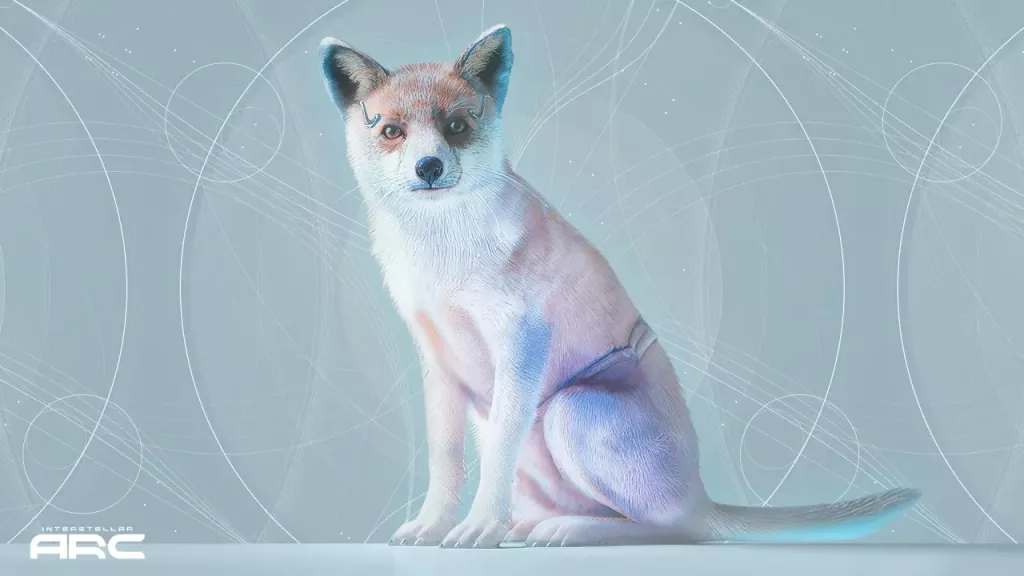
F. L. – From the very beginning, I have been reluctant to claim that immersive media and VR are entirely about storytelling. I have never truly believed that. At times I have used that language when speaking with a Hollywood executive or with people who need that framing to understand the medium. But at the core, I see VR as a medium in which storytelling is certainly present, yet it is not the entirety of what is happening. It is a component, not the equation itself.
In our work, including INTERSTELLAR ARC, we focus on creating the conditions in which emotions can emerge within the participant. We design a ritual, a story, in which the participant evolves through an unfolding experience. Everyone is exposed to the same sequence of moments, yet we do not dictate how people should feel about them.
This becomes especially powerful in a collective setting, because hundreds of people share the same ritual, the same story, the same experience, and still arrive at very different emotional responses. That contrast is essential. It allows each individual to have a personal encounter with the world we have created, even though you were part of a large group of passengers on a futuristic spaceship, even though everything took place in a shared environment.
The result is something that feels both intimate and individual, while also expansive and collective. Achieving that balance is never simple, but for us the Holy Grail is to try to accomplish it.
Participants as the core of the immersive experience
F. L. – In immersive media in general, it is as much about the experience you design as about what people bring into it. It is almost a fifty-fifty equation.
One could even compare it to the question of the tree falling in the forest: does it really happen, does it truly make a sound, if there is no one there to perceive it? Consider any film you love and remove all of its characters. On a recent flight I was rewatching Gladiator. Imagine Gladiator without a single character: only shots of the Colosseum, the desert, the scenery, two hours of landscapes with no one in them. Something essential would be missing.
In fiction films, what gives meaning is the presence of the characters and the story as it is channeled through them. In the experiences we create, the actors are replaced by the audience. The heart of the work is the person inside it. Without them stepping in to embody the main characters, there is no experience, only visual environments.
This is why I believe there is no other possible approach to this medium. For me, it is about leaning into that encounter between, in the case of INTERSTELLAR ARC, the passenger who is the central figure of that future journey, and the world we have built. Bringing that person in, with their subjectivity, their perceptions, their sensorial responses, their personality, and everything they carry into our world — that encounter is what creates the experience.
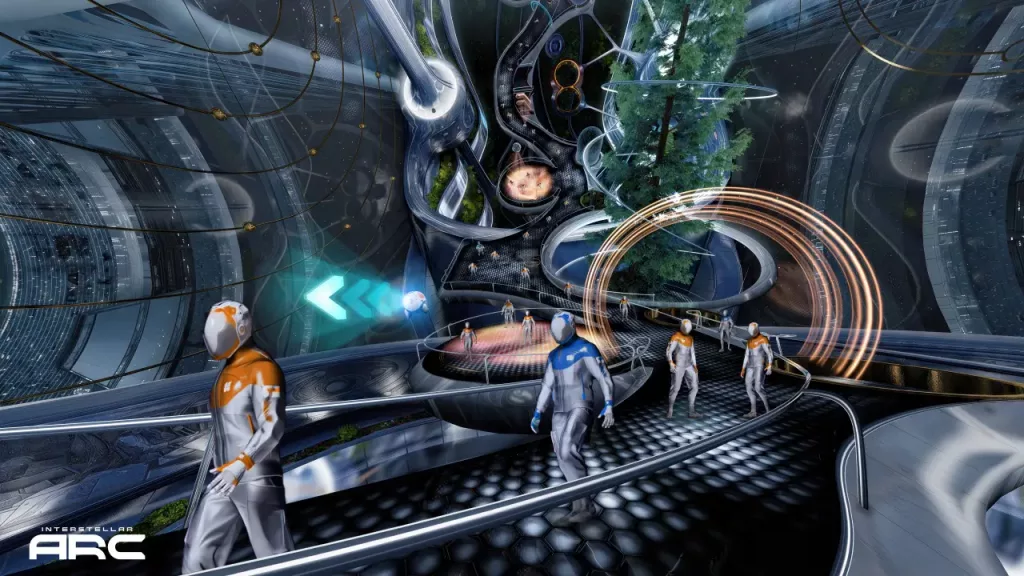
As a creator, you might be tempted to think that your job as a storyteller is to pack the story into someone’s mind, to design a spectacle where things are constantly thrown at the viewer, and to ensure that you never lose their attention.
But if that is your mindset, you are not really engaging with the idea that half of the experience belongs to the viewer as a protagonist and the other half to the storyworld you have built. Instead, you are forcing the storyworld onto those who enter it, leaving them without the feeling that they can truly belong in that world or contribute to it. In that case, you are better off making films.
Mind you, I love cinema. I come from film. I adore it. But it is a completely different medium. For the kind of experiences we create to exist, and to bring a genuine sense of contribution to the world, they need to become the best version of themselves, or at least the best version of what they have the potential to be.
For us, that means leaning into the idea of the immersive experience as an encounter between a person and a storyworld. Our task is to cultivate that encounter, that synergy. This is the core science of what we do. It is, to me, the core science of the immersive medium itself.
Back to a fictional world: from SPACE EXPLORERS: THE INFINITE to INTERSTELLAR ARC
F. L. – What first inspired INTERSTELLAR ARC is, quite literally, everything we have done throughout our careers and our lives, everything we know about ourselves and about the world. We poured all of that into this project.
More specifically, when we created SPACE EXPLORERS: THE INFINITE, our first large-scale, multiuser, location-based immersive show — and likely one of the very first of its kind, developed during the pandemic — we had no idea how it would unfold or what kind of response it would generate.
We were working squarely in the territory of innovation and risk, but it felt inevitable. We had to pursue it, because at the time of The Infinite this was the only format and the only type of show we could imagine that would allow audiences to experience the work we had captured in space in its native format, virtual reality.
Of course, we also planned and ultimately produced a VR series distributed online and through VR headsets for home viewing. But we wanted to reach a broader audience, and we did not want to do that simply by converting the VR experience into a dome projection or into a television series. We did eventually explore those formats, but our central aim was to present the work in its native VR form to a large-scale, global audience.
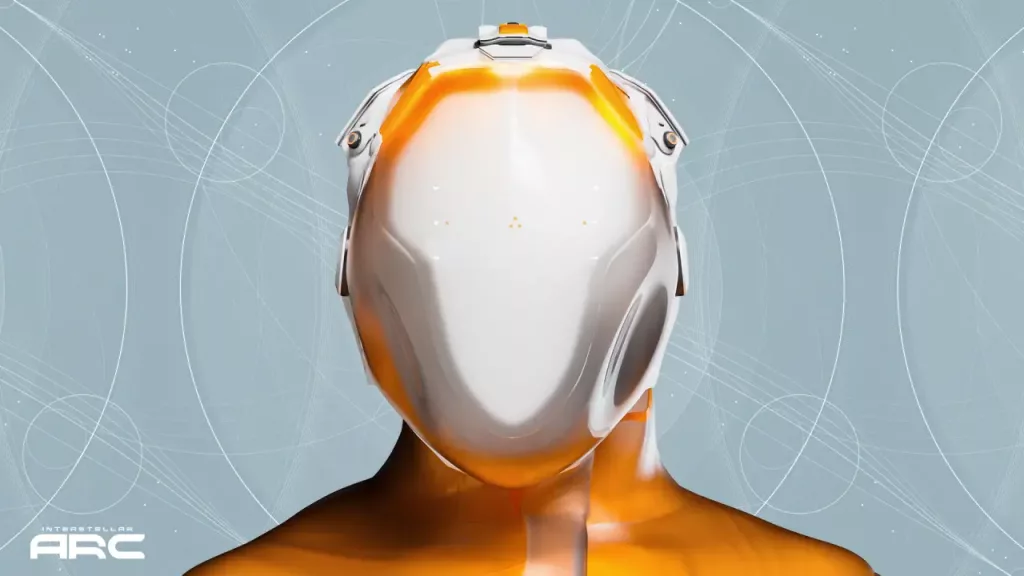
F. L. – We realized we needed to create a traveling exhibition. The challenge then became: how do we design a traveling exhibition that is also economically sustainable? We needed a certain volume of people to move through the experience.
At the same time, we wanted to preserve a sense of intimacy and collectivity, to craft a user’s journey and a progression within that journey. This forced us to rethink how we approached virtual reality storytelling. We had come from creating mostly linear, cinematic VR content, and suddenly we needed to break that linearity into multiple scenes and open possibilities, without knowing exactly what people would choose to do or where they would go.
A tremendous amount of thought went into shaping that show. When we finally launched it, we saw firsthand that the reaction was more powerful than anything we had created before. The reason was that we had quite literally turned audiences into embodied protagonists within our world.
Before that, our projects placed viewers in their living rooms, where they would put on a VR headset and embark on a cinematic, immersive experience. It was transportive, but they remained seated in a chair. This time, however, people were walking through a vast, 15,000-square-foot environment, engaging with their bodies and their senses. We immediately understood how much more powerful that could be.
That moment became an epiphany for Paul and me, as the two lead creatives of the studio. We realized that that was what we were going to start doing from that moment on. There was no going back. In terms of emotional response, audience engagement, and the depth of meaning that can be communicated through VR, it felt as though we were reaching further and deeper than ever. The sensorial and physical dimension added to our craft through that project elevated everything to a level we had never reached before.
So the next show had to be built on the foundation of what we had learned.
SPACE EXPLORERS: THE INFINITE, however, was anchored in reality. It came from three years of filming in space with astronauts, in collaboration with NASA. Its personality, tone, alignment were of a specific nature. We felt a strong desire to return to where we had begun: the creation of fictional worlds.
Storytelling and fiction are our roots. Over the years we had produced a great deal of nonfiction, but we wanted to return to fiction. And that’s when we decided the next project would build upon that foundation while telling an original story. We wanted to bring audiences into a completely new proposition, one not anchored in a documentary practice and mindset, departing fully from reality and stepping into imagination.
Once that decision was made, the story and the concept began to fall naturally into place.
Immersive tools as a way to reach the essence of being human
F. L. – One thing that struck me while watching people experience SPACE EXPLORERS: THE INFINITE was that everyone seemed to be the same age while inside it, whether they were children or elderly. No matter their social persona and age group. It felt as if, once immersed into the experience, they all became simply human. Once those external markers were set aside, what remained was our shared nature as emotional beings who respond to the world in emotional ways.
In that sense, the experience seemed to make everyone a child again: youthful, open, receptive. Most people are, somewhere within them, like that, even those who might appear closed off. It is something you cannot fight. It is primitive, rooted in where we come from as human beings.
What fascinated me was witnessing this capacity for awe, for abandonment, and in a sense for surrender, revealed so clearly in the participants.
I have been a lifelong fan of science fiction. Growing up, I was surrounded by my father’s collection of graphic novels, mainly European and French comics from the 1970s. As a child, it was a daily routine for me to dive headlong into those wild, imaginative worlds. I had no resistance. I would lose myself in those incredible stories. I expanded them and drew them at school, and they became part of my reality in a profound way.
That same state of mind is what I observed with SPACE EXPLORERS: THE INFINITE. This fully-immersive medium creates the perfect mindset for entering a science fiction world, for taking people far into the future, eleven light years from Earth, on a journey to an exoplanet in a different chapter of humanity, when interstellar exploration has become possible and something that unites us as humans.
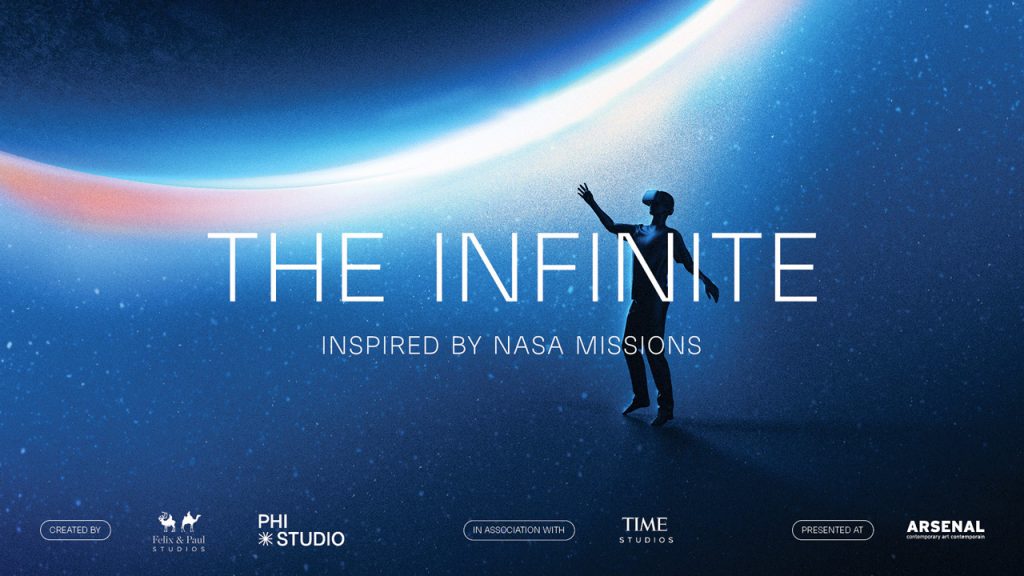
So we decided to make that leap into a futuristic time and place – through this medium. If we did our job well, it would all feel real. Audiences would be able to surrender to the proposition and be transported, just as I was transported when I was younger, falling into the worlds of those graphic novels.
Exploration and humanity’s profound quest for meaning through immersive eyes
F. L. – That was the inception point. And of course, there is also the fact that we have worked with NASA for so long. This year marked our ninth year of collaboration! Even though they are not involved in INTERSTELLAR ARC, since it takes place in a completely fictional universe, this collaboration allowed me to spend, over the years, a significant amount of time speaking with astronauts, interviewing them, and immersing myself in their world.
This happened mainly through SPACE EXPLORERS: THE ISS EXPERIENCE and SPACE EXPLORERS: THE INFINITE, but also with SPACE EXPLORERS: MISSION TO THE MOON, another project we created that will be released in the coming months. And when you spend time with astronauts—you in Italy can look up Luca Parmitano, who is, I believe, the perfect embodiment of what I am about to describe—you begin to see something extraordinary.
On the surface, astronauts present themselves as extremely capable, intelligent, practical individuals, often speaking like engineers: explaining systems, procedures, and technical details. But when you gradually lead them toward deeper questions — what this is ultimately about, why they are willing to risk their lives, why they leave their families for a year to go into space — you realize very quickly that this endeavor is a profound one. Before even going into space, they dedicate seven years of training, learning new languages, and living abroad. Why? What drives them?
What emerges is that, in their own words and personal ways, they all share the same dream and they all reach the same realization: that there is an inevitable point where humanity needs to find its place in the universe, to connect with it and to go out there to pursue the fundamental quest of figuring out who we are and where we come from.
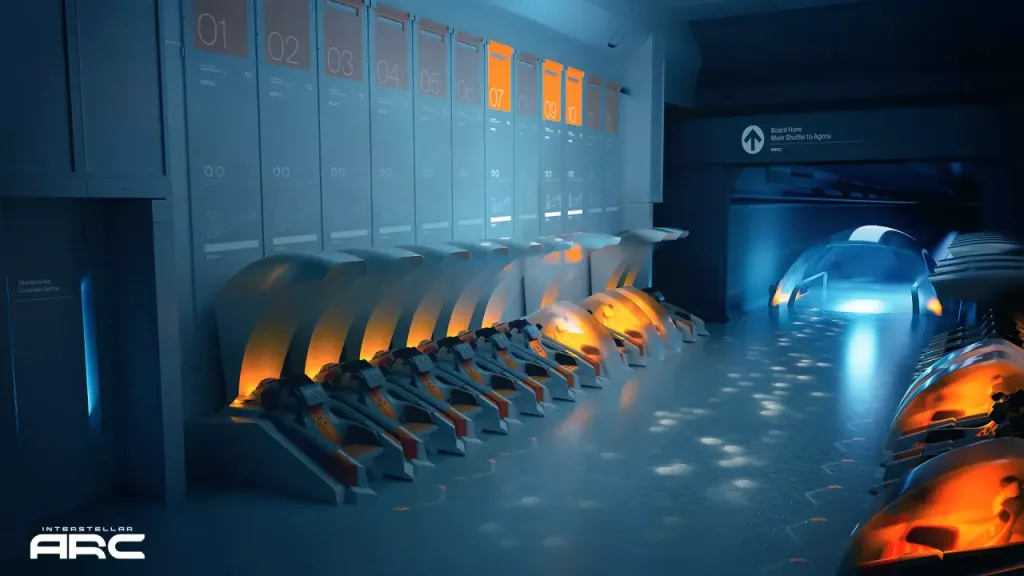
Some pursue this through spirituality, some through meditation, others through different paths. But the universe is an actual place. It exists, and one can travel through it, moving human presence and human consciousness into new spaces. It is the greatest mystery unfolding all around us, in every direction. And with it come the greatest questions: are we alone? Who else is out there? What is the nature of all this? What is consciousness? Why do we think? What is the point of existence?
Perhaps there are no definitive answers, but there are ways to inquire, to explore, to seek. And that process is inevitable. As human beings, we are driven to pursue it. It’s in our DNA. It is the same impulse that once pushed us out of caves and led us to wonder what lay on the other side of the mountain. Today, we are asking the same questions about what lies beyond our solar system, and within and beyond our galaxy.
Since 1995, we have discovered exoplanets that could be habitable. We now possess the instruments to begin deciphering the composition of their atmospheres and to inquire whether they could support life. Very soon we will be able to send probes – and perhaps not in our lifetimes but in those of upcoming generations, we will begin to see images of other worlds. Humanity will be profoundly transformed by that. To see a habitable planet will ignite in us an irresistible desire to go. We will feel compelled to reach the next destination and explore.
Because it is not only about the act of going. Each journey reshapes us. Each time we go farther, our perception of who we are changes. Our sense of what humanity is evolves. And our understanding of the purpose of our collective experience is transformed.
Supporting the project of space exploration is, at its heart, supporting a profound quest for meaning and purpose. I believe this is what drives astronauts most deeply, and what ultimately inspires them: the pursuit of those great questions. They dedicate themselves to contributing to that pursuit.
I have always felt that we do not tell the story of this “why” often enough. People admire astronauts; they see them as real-life superheroes. We sometimes associate them with other role models, even with fictional figures like Captain America; symbols of power and courage. But beneath the rockets and the heroism lies something more profound, what drives the quest itself. That is the story I wanted to build around.
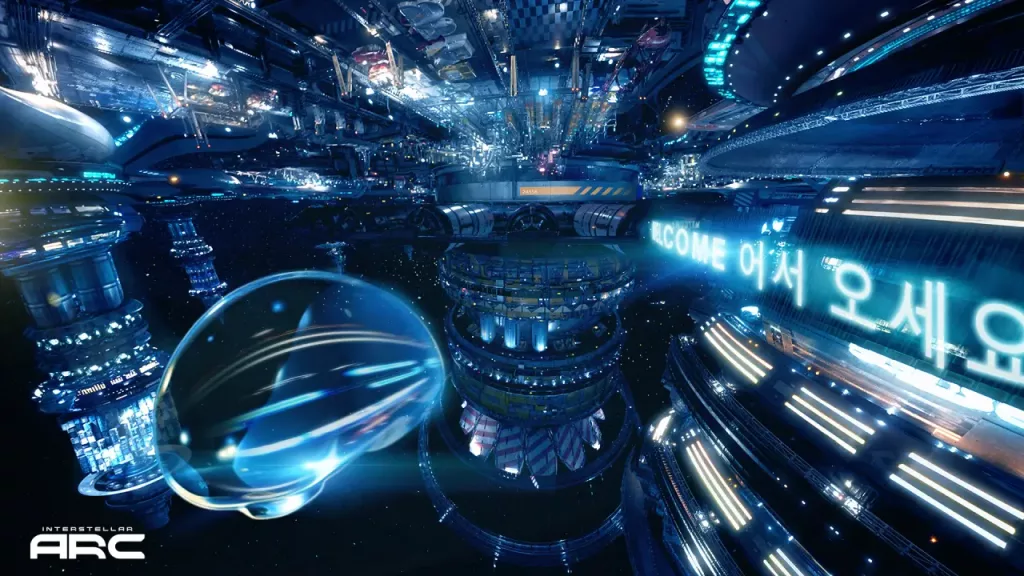
Embracing the power of direct experiences
F. L. – The idea was to imagine, as realistically as possible (though I say “realistically” with quotation marks, since many engineers would dismiss our proposition as unrealistic) where humanity might be a few hundred years from now, and how space exploration could reshape us as a species. We wanted to bring viewers on a journey where they become participants in that great adventure of interstellar exploration, in a way that does not feel opportunistic or superficial, but meaningful and profound.
You see, I just came back from Italy: I didn’t read a book about Italy, or watch a film about going there, or send someone as a proxy in my place. I went. And most things we do in life are like that: we live experiences. If you say, “I go to the beach,” no one will ask why you don’t send someone else to do that for you. We all understand the appeal of direct experience. We all know how experiences shape us. We don’t question it. It is how we learn, how we grow, how we change, how we evolve. And I don’t see why artistic mediums should remain such an abstraction of that.
The promise of immersive media lies precisely here. I wouldn’t say it has fully materialized yet; I believe it will unfold more and more in the decades and even centuries to come. But its true promise is the ability to connect with people at an intensity comparable to real life experience, because that is how we are wired to be in the world, to interact with it. Immersion attempts to recreate that within a medium, instead of abstracting away and presenting only a fragment within a frame.
INTERSTELLAR ARC: a 100% real-time rendered experience
F. L. – Projects built on such premises and ambitions are inevitably very complex. Since we began in 2012, about ninety percent of our work has been cinematic virtual reality: real-life experiences filmed in 3D/360. These included projects with former President Obama (THE PEOPLE’S HOUSE & THROUGH THE AGES), with nomadic tribes in The NOMAD series, with LeBron James (STRIVING FOR GREATNESS), Eminem (MARSHALL FROM DETROIT), and Cirque du Soleil. All of them were live-action, filmed reality, and linear in structure.
When we produced SPACE EXPLORERS: THE INFINITE, the foundation was also cinematic VR, based on the content we had filmed aboard the International Space Station. Yet the way audiences accessed that content was through a real-time rendered environment created within Unreal Engine. Visitors could walk through it as though inside a game or a simulated world, accessing the cinematic VR scenes from within the real-time experience. The result was both a real-time rendered experience and a pre-rendered cinematic one, intertwined.
With INTERSTELLAR ARC, however, everything changes. This time the experience is one hundred percent real-time rendered. It unfolds in a fully fictionalized world, with only minimal cinematic content. It is essentially a completely generated environment.
For our studio, this represents an entirely new and highly complex endeavor. It demanded deep reflection on how to evolve our practice, which had its roots in cinematic storytelling, in order to create something of this scale as a fully real-time interactive experience. It has been quite a journey to reach this point.
Between challenges and possibilities: growing a living experience
F. L. – One challenge we had with INTERSTELLAR ARC is interactivity. Interactivity can sometimes feel gimmicky. It can appear superficial when compared to the depth of a cinematic experience, where you carefully consider how to shape the story or design the emotional journey. Participants might enter an interactive experience and simply play around with elements as if it were a lighthearted game.
The real difficulty lies in balancing interactivity with the storyworld you are trying to convey. That alignment is crucial. The goal is for interactivity to serve the experience, not to feel like an extra layer of seasoning added for fun but without real weight or gravitas.
What I love most is that the experience itself is always evolving. It is never finished; it continues to grow and transform. To me it feels like a living organism, almost like a garden. You plant a garden, you nurture it, but you cannot control everything that happens inside it. It develops a life of its own. Things emerge unexpectedly. There is chaos in it, but also beauty. The beauty lies precisely in the fact that it is alive, with its own agenda and its own set of rules.
And a project like INTERSTELLAR ARC does feel as if it has taken on a life of its own. At times it seems that the answers come from the garden itself, so from the project. It acts in a certain way, and you realize: we will simply have to live with that now. I just love that.
The downside, of course, is that from a producer’s perspective this might sound like a way of saying we want to work on the project endlessly. But that is not the case. What we mean is that we want to keep making it better, and make it evolve, over time.
More concretely, this connects back to what I mentioned earlier: the audience member is the core protagonist of the experience, the one who completes it. Without that protagonist, the experience does not fully exist. Prototyping within the studio is one thing. You can invite hundreds of people to go through the experience and give feedback, filling out surveys about what they understood or did not understand about the experience.
However, the true test only comes when you launch the show and face a real audience. In this case, it will be in Las Vegas, with people who know nothing about us, about Felix & Paul Studios or about INTERSTELLAR ARC as a brand. It is not Star Wars or Marvel; it is a new intellectual property. For many of those visitors, not only are the studio and INTERSTELLAR ARC completely new, but virtual reality itself might besomething they have never experienced before. And even for those who have tried VR, few have ever walked inside an enormous centrifugal spaceship in virtual reality for forty minutes.
The level of newness is overwhelming, so the real understanding of what we have created will only arrive once we open the show and see hundreds of people moving through it. That is when we will realize what works, what needs refinement, what inspires amazement, and how audiences truly respond. Until that moment, we can guess, but we cannot fully know.
From there, you draw conclusions, gather insights, and let the garden grow differently: making adjustments, adding flowers, removing weeds.
That was exactly our process with SPACE EXPLORERS: THE INFINITE. Because it was a traveling show, every new city meant rethinking aspects of it. On average, we spent six months in each location, and for the first year or two, every time we relaunched in a new place, we changed something about the show.
With INTERSTELLAR ARC, the situation is different, since it is a resident production in Las Vegas, where it will remain for several years. But I believe the approach will remain the same. Every few months or so, we will add, refine, evolve, and keep it alive.
The Launch at AREA15
F. L. – October 15 marks the official launch of INTERSTELLAR ARC in Zone 2: The Terminals at AREA15 in Las Vegas.
Area15 is expanding rapidly. It began with Meow Wolf’s immersive experience, which I admire greatly. I think the team behind AREA15 looked at Meow Wolf’s success and recognized that there was an audience for immersive experiences. They wanted to grow that vision, to expand it, and now they are building an entirely new district. We are going to be part of that.
I profoundly believe in what they are trying to achieve: creating synergy between different experiences, building an entire neighborhood where people can go and encounter extraordinary forms of immersion. It feels like the beginning of a larger journey, one that we cannot wait to join.

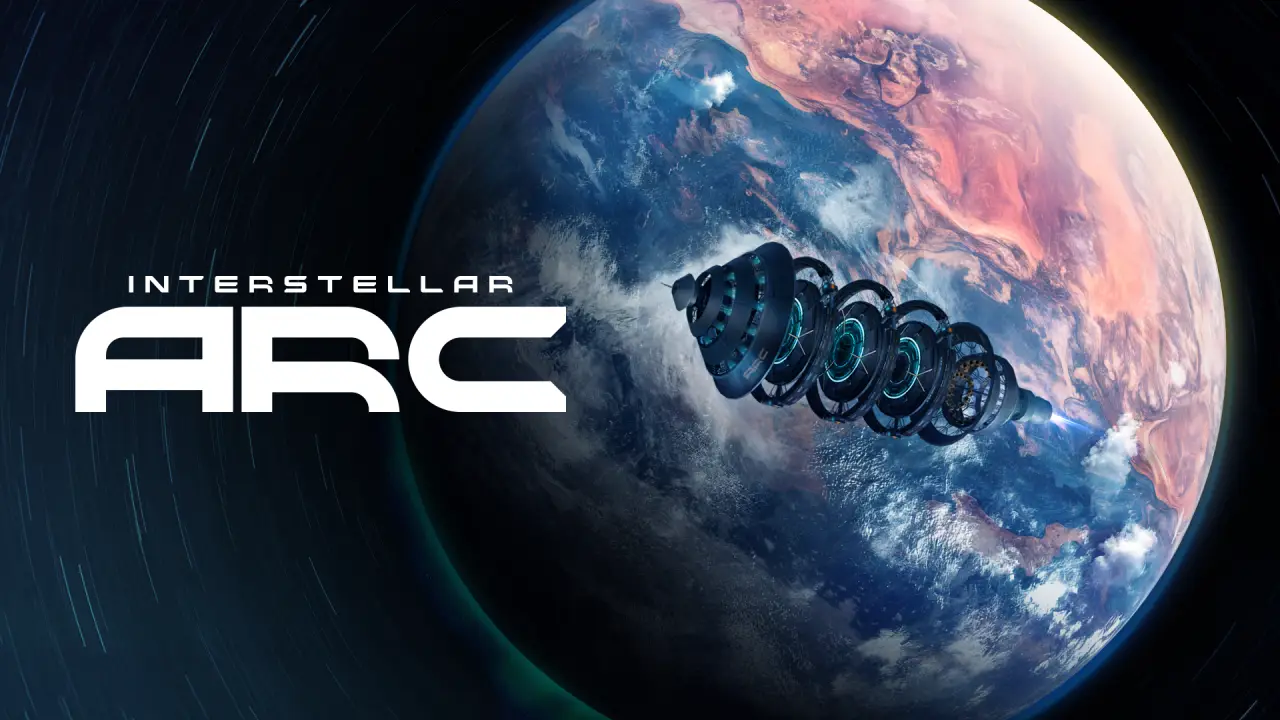

Leave a Reply
You must be logged in to post a comment.